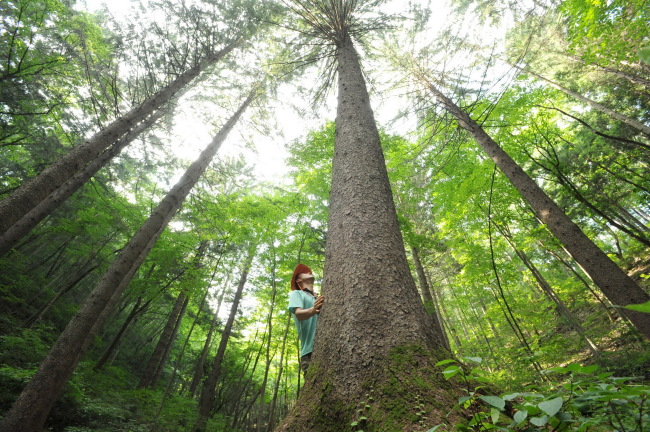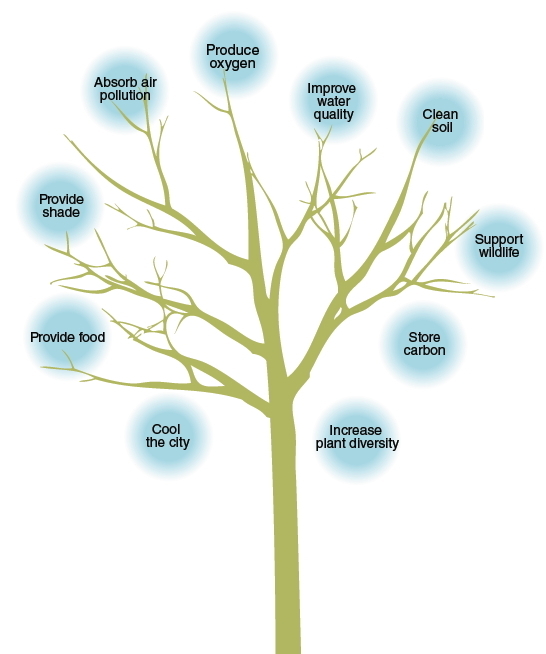They might just stand still all day long as if they do nothing at all. But they give us more than most of us realize.
They absorb toxic gases and give us fresh, cool air.
They add beauty to our natural surroundings, and are used in proverbs, novels and movies for enlightenment.
They heal us, bring us closer together and even help us make money.
And they ask for nothing in return.
Trees and forests have become an important and integral part of society especially as the world faces climate change as a result of human activity.


The global community may have come to realize the importance of developing an environmentally friendly world amid increasing emissions of carbon dioxide.
But some say many still “can’t see the forest for the trees.”
“Nobody is going to protect the environment for us. We have to do it ourselves,” said Kim Myung-jeon, chairman of Green Ranger, a non-profit organization that promotes tree planting among the youth.
“We need to start thinking that tree planting is not only for our own good, but (imperative) for our future.”
The country hopes to change people’s perceptions by promoting forest plantation as it celebrates the 69th Arbor Day this weekend.
The Korea Forest Service, a state-run forest management agency, said that it would push efforts to promote and plant 5.2 million trees on 22,000 hectares of land ― an area 76 times the size of Yeouido ― by the end of this month.
“We will aim to provide an environment where people can comfortably rest and energize as this year marks the 41st anniversary since Korea adopted a national land policy promoting tree planting,” KFS Minister Shin Won-sop said in a statement.
Industry experts said it may take a while for the public and the private sectors to see tangible benefits from forestation.
But they need to be patient, as investments for trees and forests will eventually pay off, as seen by Hansol Homedeco, a Korean construction and furniture materials maker, which saw a profit after investing for more than two decades.
One hundred Mongolian oak trees, for instance, can annually absorb 1 ton of carbon dioxide, the main cause of global warming.
One ton of greenhouse gases is equivalent to the emissions from driving a car with a 2,000 cc engine between Seoul and Busan seven times.
Their contribution may not be visible, but that is what trees do, besides adorning the natural scenery.
Some say this is enough reason for the people to cherish them as did Willa Cather, the author known for her “Great Plains” novels, who said: “I like trees because they seem more resigned to the way they have to live than other things do.”
By Park Hyong-ki (
hkp@heraldcorp.com)


![[Weekender] Seoul Forest: A grassy woodland with waterfront views](http://res.heraldm.com/phpwas/restmb_idxmake.php?idx=605&simg=/content/image/2014/04/04/20140404001496_0.jpg)
![[Weekender] Trees: Food source, medicine cabinet and climate saver](http://res.heraldm.com/phpwas/restmb_idxmake.php?idx=605&simg=/content/image/2014/04/04/20140404000912_0.jpg)
![[Weekender] Korean firms expand investment in overseas forest development](http://res.heraldm.com/phpwas/restmb_idxmake.php?idx=605&simg=/content/image/2014/04/04/20140404001491_0.jpg)
![[Weekender] Green Ranger leads push for conservation](http://res.heraldm.com/phpwas/restmb_idxmake.php?idx=605&simg=/content/image/2014/04/04/20140404001494_0.jpg)







